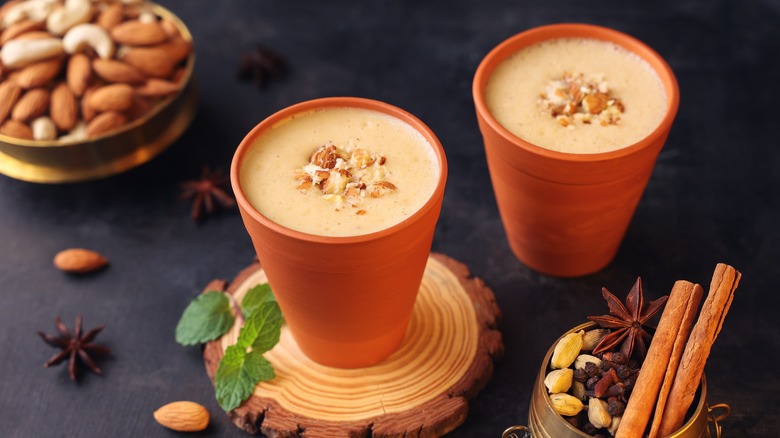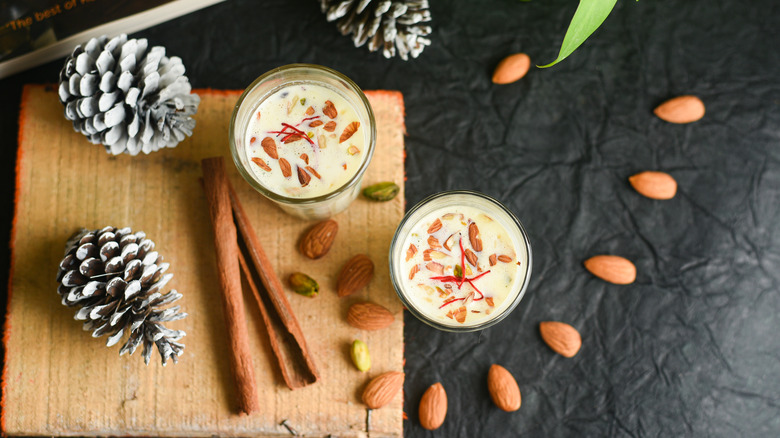What Is India's Badam Milk And How Do You Drink It?
The world of great nut milk alternatives seems to grow every day, with options like cashew, macadamia, and hazelnut joining the mix. But by looking to other cultures and their cuisines, we can discover delicious nut milks that have long been staples, even before our pool of almond milk brands or cashew milk purveyors exploded here in the United States. In India, a beverage called badam milk, or badam doodh, takes the sweet nuttiness of almond milk and energizes it with a beautiful blend of spices and botanicals.
The most important thing to know about badam milk, especially if you're in the market for a new dairy-free option, is that it isn't actually traditionally free of dairy. Badam milk is literally an almond milk in the sense that ground almonds are mixed with whole milk. It's creamy, silky, and rich, with both the nutty sweetness and nutritional value of almonds, plus fragrant cardamom and saffron.
Badam milk can also absolutely be made with dairy-free alternatives, though, like whatever your go-to almond milk brand is, or any other nut milk or even soy or oat milk. You're essentially grinding almonds into a paste — and you can add different nuts to this to play with flavors, like pistachios — and then stirring that into dairy or dairy-free milk, which you'll sweeten with sugar, and season with cardamom and saffron. You can incorporate other aromatic treats like rose water, and garnish the finished milk with more spices.
Badam milk is a celebratory treat passed down through generations
Badam milk is something people grow up drinking in India and have fond memories of; they often pass this tradition on by making it for their own children, and also continue to enjoy it themselves throughout adulthood — it's tasty, nutritious, and has that special nostalgia. Badam milk is even celebratory: It's commonly served at weddings and parties. You can also find badam milk at restaurants and coffee shops in India, but those iterations may sometimes be made with additives. Things like corn starch or custard powder are sometimes used for thickening. Badam milk is at its most special when lovingly prepared at home.
People also value badam milk for the calcium and protein from the milk and almonds. Saffron may also add health benefits: The world's most expensive spice is thought to have both antioxidant and anti-inflammatory properties. Cardamom is thought to possess these benefits, too, though more research is needed. What we do know is that both spices bring lovely complexity to a creamy, nutty beverage, and you can further enhance that with the spices of your choosing, like ginger, nutmeg, cinnamon, or allspice. In fact, badam milk lends itself well to creative variations. For example, you can stir in cocoa powder to make chocolate badam milk, or you can mix in dried fruits that have been ground into a powder for an earthy, fruity twist.

